James Webb telescope: Sun shield deployment is critical
- Published
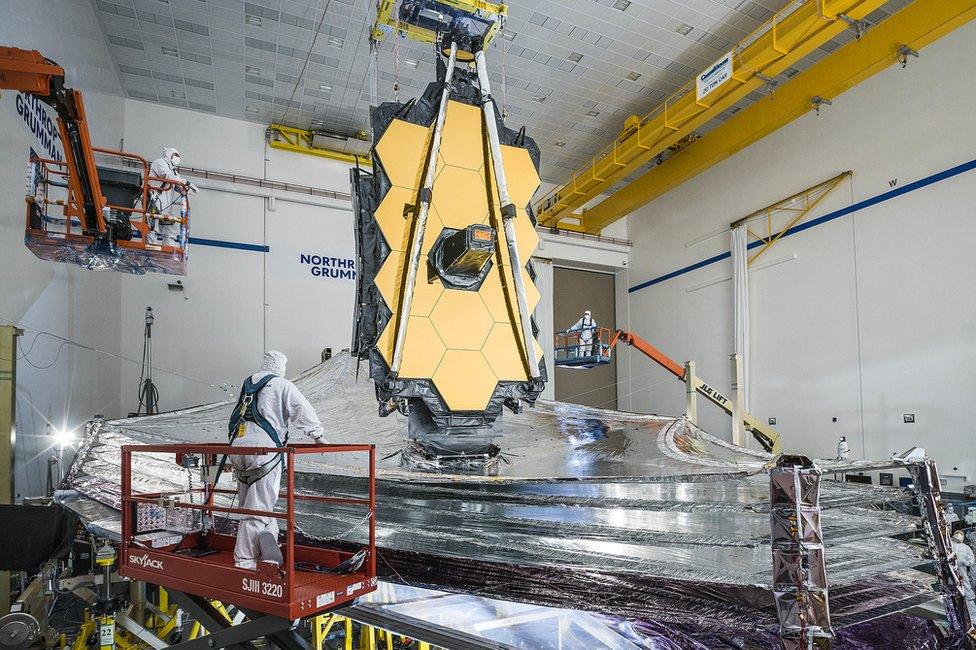
The shield will be separated into five layers to protect the telescope from the Sun
The next few days will be critical in determining whether the new James Webb telescope is able to undertake its thrilling mission to image the first stars to shine in the Universe.
The space observatory, which launched into orbit on Saturday, is about to attempt to unpack its five-layered sun shield.
Without this tennis court-sized barrier, Webb cannot achieve the super-cold temperatures needed by its mirrors and instruments to work properly.
It's a "make or break" moment for Webb.
Unfurling the shield's membranes - each as thin as a human hair - will involve an astonishing symphony of hinges, motors, gears, springs, pulleys and cables.
There is very little room for error.
"The sun shield is like a skydiver's parachute," says Krystal Puga from Northrop Grumman, the American aerospace company that assembled Webb.
The shield must deploy perfectly "without snags, without any tangles".
Lift-off: Watch the moment the James Webb Space Telescope is launched
The telescope - a joint project of the US, European and Canadian space agencies - enjoyed a spectacular launch from Earth on 25 December.
But that marked merely the start of a six-month process of getting Webb ready to image the cosmos.
Because the observatory is so big, it had to be folded up to fit inside the nosecone of its Ariane launcher. And that means it now has to be unfolded in space before it can begin operations.
Mission controllers, based at the Space Telescope Science Institute (STScI) in Baltimore, Maryland, have already overseen the deployment of a solar array, a communications antenna, and the extension of a tower structure holding Webb's mirrors.
But those were relatively straightforward activities compared with the set-up required for the shield that will protect the telescope from the light and heat of the Sun.
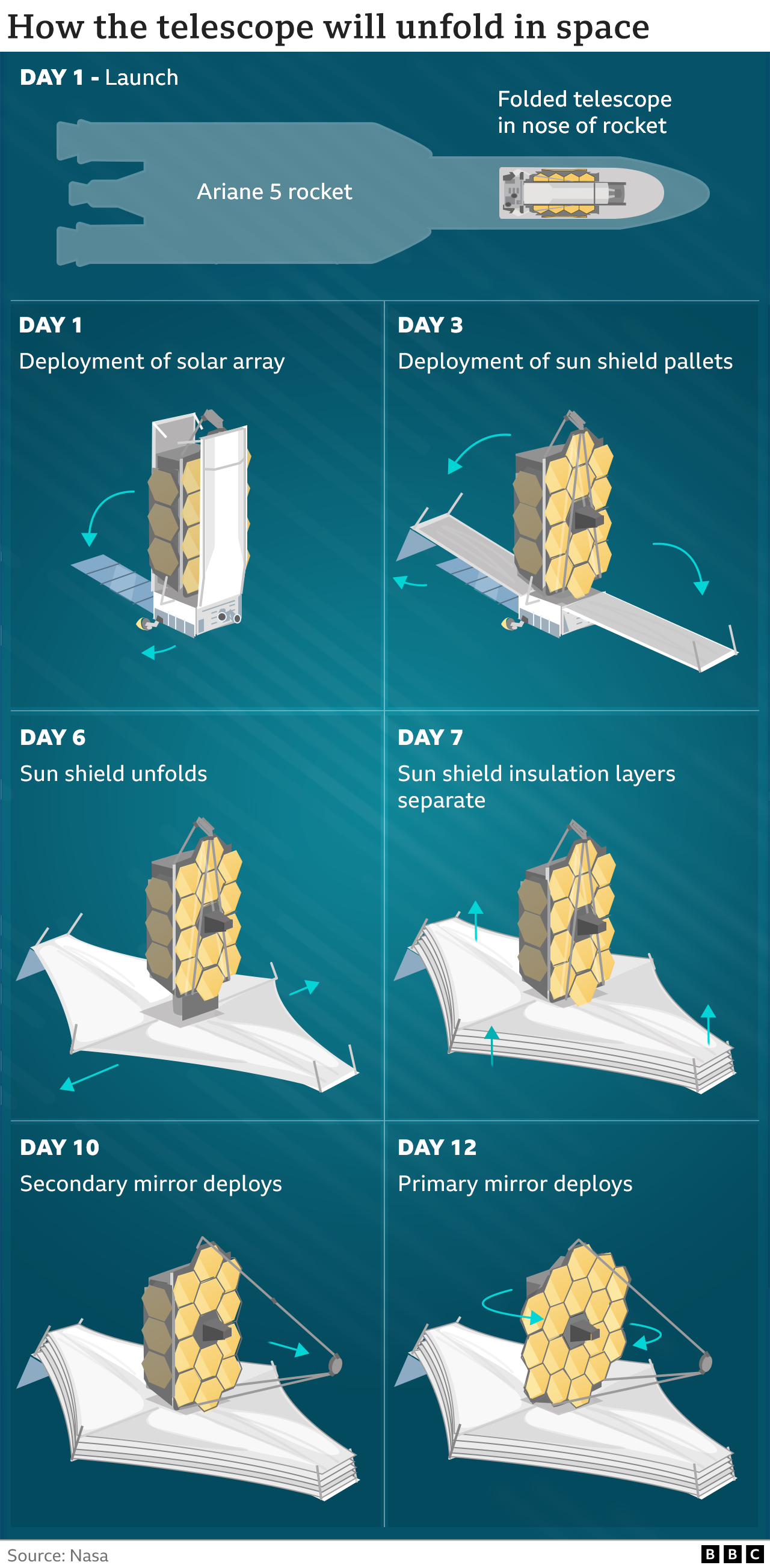

Preparations for this unfurling started well with the opening of the two pallet structures holding the barrier's membranes, made from an aluminium-coated polymer called kapton. These pallets folded outwards on cue on Tuesday and locked firmly into place.
Now comes the tricky part: Pulling out the shield's individual sheets, separating them into their five distinct layers with clear gaps in-between, and then tensioning the whole system so that every membrane forms a smooth, rigid surface.
The difficulty is that the movement of the shield is inherently "floppy and indeterministic", says Mike Menzel, Nasa's lead mission systems engineer on the Webb project.
"We can't really predict its shape, but we can constrain it. We can try to prevent it from going in places that we don't want it to go, places where it could snag or tear. And we do that by building in restraint mechanisms. There's going to be a lot of these restraint mechanisms."
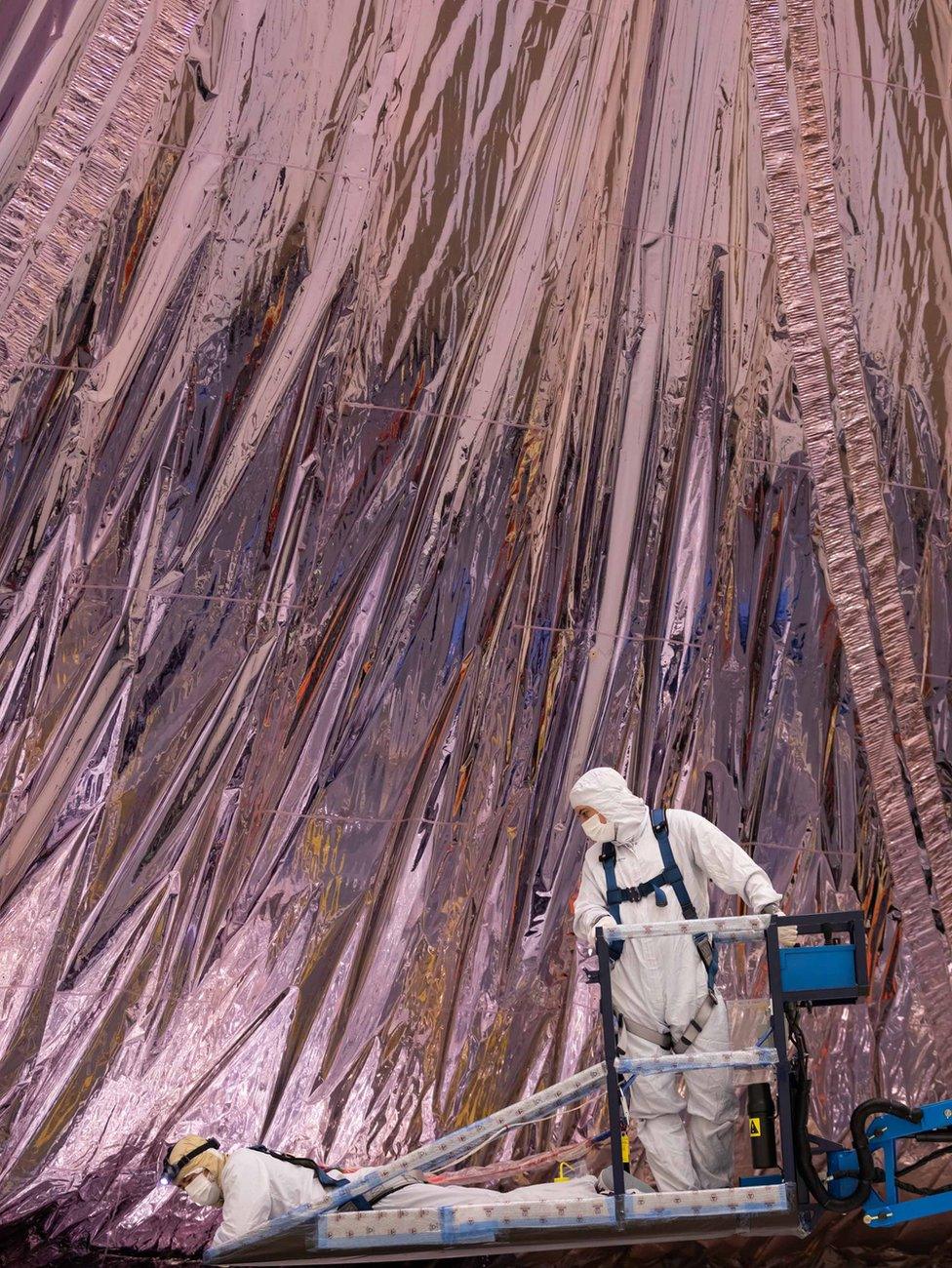
The shield material is made from kapton, which in everyday life is an electrical insulator

Webb will view the Universe in the infrared. It's at this longer wavelength of light that the faintest, most distant stars will be observed to shine.
But it's in the infrared that every warm object is also seen to glow - even the telescope itself, unless it's taken down to an ultra-low temperature.
Webb's mirrors and instruments are designed to work below -230C. What is more, the main 6.5m mirror will have to be aligned and focussed at some point and this requires one of the instruments, the Near-Infrared Camera (NIRCam), to be able to pick out a sample star, which it won't be able to do if its detectors are not at the correct temperature. So the whole telescope system is dependent on the sun shield doing its job
If controllers at the STScI encounter difficulties in the next few days - a pulley becomes snagged, for example - they have a number of pre-prepared strategies to work through the problems.
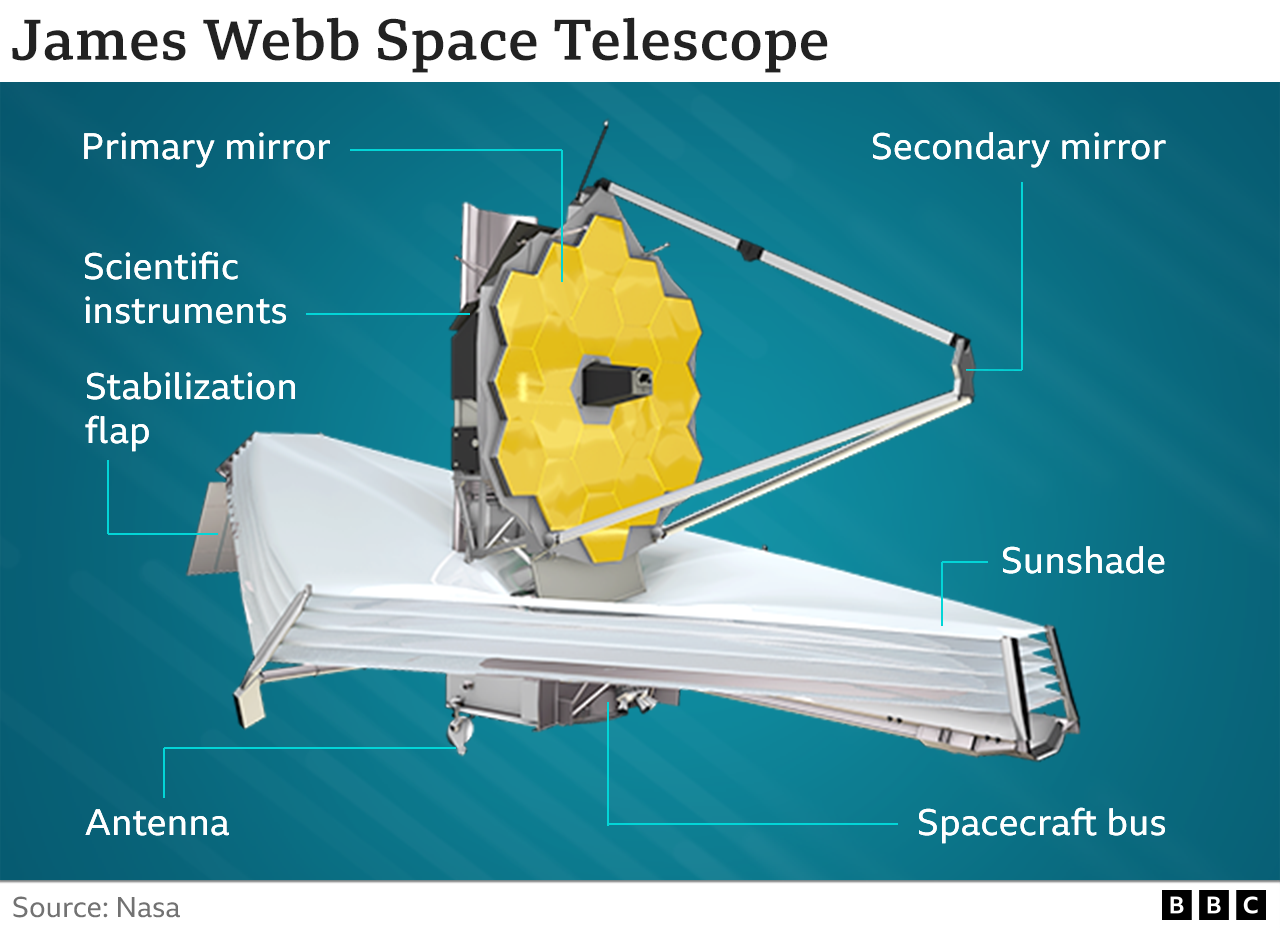
In extremis, it's possible even to give the whole telescope a bit of a shake to free a reluctant mechanism.
But Nasa astrophysicist Amber Straughn told BBC News the testing done before launch should lead to a positive outcome: "The whole deployment sequence - you may think, 'oh my gosh, that looks really hard'. And it's true, it is hard. This is really, really difficult engineering. But you know, Nasa has never shied away from doing hard things, and so I have full confidence that it's going to work."
It would be Sunday at the earliest that shield deployment might finish.
Assuming the unfurling proceeds as it should, controllers will then move on to the correct positioning of Webb's mirrors.
A secondary reflecting surface has to be extended on long booms, while the main mirror has "wings" that must turn through 90 degrees.
The telescope is currently in transit to an observing station 1.5 million km away on the Earth's nightside. It should arrive towards the end of January.
It will then take a further five months to get Webb ready to acquire its "first light" images. These will be unveiled at a media conference, most likely in June.
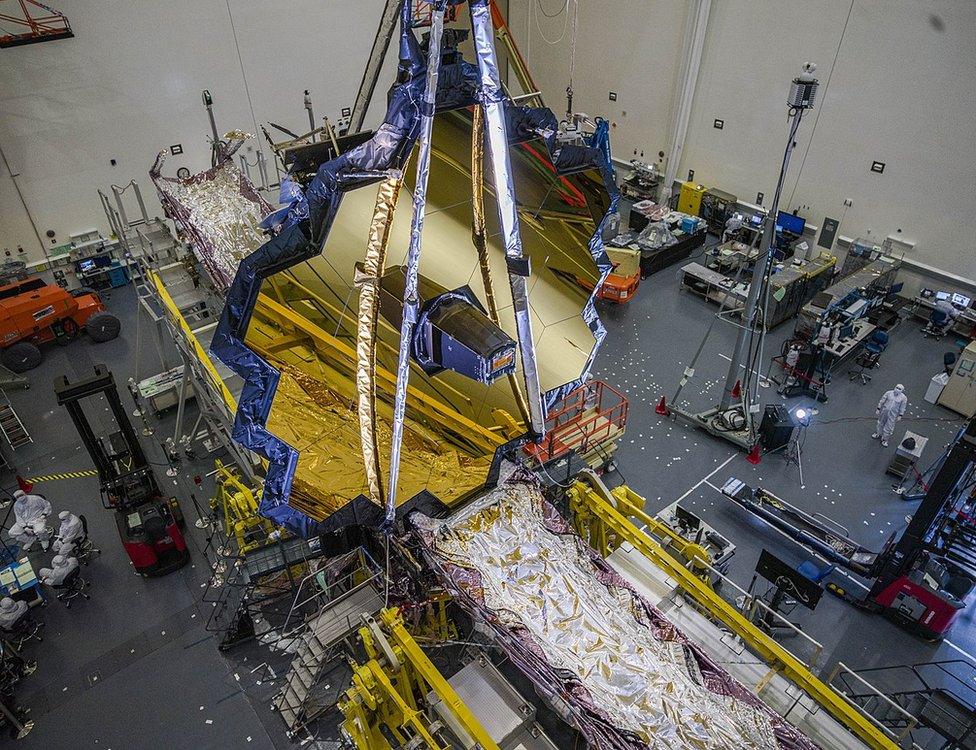
Engineers have tested the deployment sequence over and over again
Amber Straughn, an astrophysicist on Nasa's JWST science team, explains why the telescope is so exciting and important
